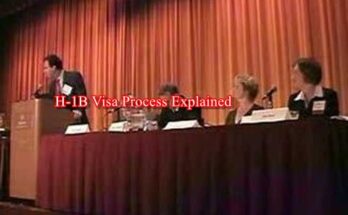A Comprehensive Guide to Permanent Residency
Permanent residency is a significant status for individuals wishing to live indefinitely in a country that is not their place of birth. In the context of the United States, permanent residency is often referred to as having a “Green Card.” This status allows individuals to live and work in the U.S. on a long-term basis and is a crucial step for those seeking to become U.S. citizens eventually.
This guide will cover various aspects of permanent residency, including its benefits, application process, eligibility criteria, and responsibilities. Whether you are considering applying for permanent residency or simply want to understand it better, this guide will provide you with a thorough overview.
What is Permanent Residency
Permanent residency refers to the status granted to non-citizens allowing them to live and work in a country on a permanent basis. In the U.S., permanent residents are often known as Green Card holders. This status is different from temporary visas or visitor permits, which only allow for short-term stays.
Key Features of Permanent Residency
Indefinite Stay: Permanent residents can live in the U.S. indefinitely, provided they follow the country’s laws and do not abandon their residency status.
Work Authorization: Permanent residents have the right to work for any employer in the U.S. without needing additional work authorization.
Pathway to Citizenship: Permanent residency is often a stepping stone to U.S. citizenship. After meeting certain residency requirements, permanent residents can apply for naturalization.
Ability to Live and Work in the U.S.
Permanent residents can live anywhere in the United States and work for any employer. They are not restricted to specific job types or locations, unlike many temporary visa holders.
Access to Benefits
Permanent residents may qualify for certain benefits, such as:
Social Security: Eligible to receive Social Security benefits after contributing to the system.
Healthcare: Access to healthcare services, including eligibility for some public health programs.
Educational Opportunities
Permanent residents can attend public schools and universities at in-state tuition rates, which can be significantly lower than rates for international students.
Pathway to Citizenship
Permanent residency is often the first step toward U.S. citizenship. After fulfilling certain residency and other requirements, permanent residents can apply for naturalization.
Legal Rights and Protections
Permanent residents enjoy many legal protections and rights under U.S. law, including protection against deportation as long as they comply with laws and regulations.
Responsibilities of Permanent Residents
With the benefits of permanent residency come specific responsibilities:
Adherence to U.S. Laws
Permanent residents must obey all U.S. laws, including federal, state, and local regulations. Serious criminal convictions can lead to the loss of permanent residency status.
Tax Obligations
Permanent residents are required to file U.S. income taxes and report their worldwide income to the Internal Revenue Service (IRS).
Maintaining Residency
Permanent residents must maintain their residency status by not abandoning their permanent residence. Extended absences from the U.S. can lead to loss of status.
Selective Service Registration
Male permanent residents between the ages of 18 and 25 are required to register with the Selective Service System, which is used for potential military conscription. A Comprehensive Guide to Permanent Residency
The Process of Obtaining Permanent Residency
The process of obtaining permanent residency involves several key steps. Here’s a detailed explanation A Comprehensive Guide to Permanent Residency
1. Eligibility Requirements
To apply for permanent residency, you must meet certain eligibility requirements. Common pathways include A Comprehensive Guide to Permanent Residency.
a. Family-Based Immigration
Family-based immigration allows U.S. citizens and lawful permanent residents to sponsor close relatives for permanent residency. Eligible relatives include:
Spouses
Unmarried children under 21
Parents (if the sponsor is at least 21 years old)
Siblings (for U.S. citizens only)
Employment-Based Immigration
Employment-based immigration allows individuals to obtain permanent residency through a job offer from a U.S. employer. There are several categories, including:
EB-1: For individuals with extraordinary abilities, outstanding professors and researchers, and multinational managers and executives.
EB-2: For professionals with advanced degrees or exceptional abilities.
EB-3: For skilled workers, professionals, and other workers.
EB-4: For special immigrants, including religious workers and certain other categories.
EB-5: For investors who invest a significant amount of capital in a U.S. business that creates jobs.
Refugee or Asylum Status
Individuals granted asylum or refugee status can apply for permanent residency one year after being granted this status A Comprehensive Guide to Permanent Residency
Diversity Visa Lottery
The Diversity Visa Lottery program provides a limited number of visas to individuals from countries with low rates of immigration to the U.S. Winners are selected randomly.
Application Process
The application process varies depending on the category but generally involves the following steps A Comprehensive Guide to Permanent Residency
Petition Filing
The first step is filing a petition with U.S. Citizenship and Immigration Services (USCIS):
Family-Based: The U.S. citizen or permanent resident files Form I-130, Petition for Alien Relative.
Employment-Based: The employer files Form I-140, Immigrant Petition for Alien Worker.
Refugee/Asylum: Apply through Form I-485, Application to Register Permanent Residence or Adjust Status, after one year of asylum or refugee status.
Approval of Petition
USCIS reviews the petition and approves or denies it based on eligibility and supporting evidence, A Comprehensive Guide to Permanent Residency
Application for Adjustment of Status or Consular Processing
If you are already in the U.S., you may file Form I-485, Application to Register Permanent Residence or Adjust Status. If you are outside the U.S., you will go through consular processing at a U.S. embassy or consulate.
Biometrics and Interviews
After filing, you will be scheduled for a biometrics appointment to provide fingerprints and other biometric information. An interview may also be required, where you’ll answer questions about your application and background.
Approval and Issuance of Green Card
If your application is approved, you will receive a Green Card, which grants you permanent residency status A Comprehensive Guide to Permanent Residency
Maintaining Permanent Residency
After obtaining permanent residency, you must continue to meet certain requirements to maintain your status A Comprehensive Guide to Permanent Residency
Resident Status
Maintain your residency by living in the U.S. and avoiding extended absences. Absences longer than six months may raise questions about your intent to maintain permanent residency.
Renewing Your Green Card
Green Cards typically need to be renewed every 10 years. You must file Form I-90, Application to Replace Permanent Resident Card, to renew your Green Card.
Applying for Citizenship
After five years of permanent residency (or three years if married to a U.S. citizen), you may be eligible to apply for U.S. citizenship through naturalization.
Common Challenges and Solutions
Navigating the process of obtaining and maintaining permanent residency can come with challenges. Here are some common issues and how to address them:
Application Delays
Delays in processing can occur due to various reasons, including high application volumes or additional document requests. Stay informed about your application status and respond promptly to any requests for additional information.
Denial of Application
Applications may be denied due to ineligibility, incomplete documentation, or other issues. If denied, you can appeal the decision or reapply if eligible. Seek legal assistance if needed.
Maintaining Residency
Extended absences from the U.S. can jeopardize your permanent residency status. To avoid this, obtain re-entry permits if you plan to be outside the U.S. for extended periods, and ensure you maintain ties to the U.S.
Conclusion
Permanent residency is a significant and valuable status that allows individuals to live and work in the U.S. on a long-term basis. Understanding the benefits, responsibilities, and application process is crucial for anyone considering applying for permanent residency.
By following the outlined steps, meeting eligibility requirements, and maintaining your status, you can successfully navigate the journey to becoming a permanent resident in the U.S. Whether you are applying for yourself or assisting a loved one, this guide provides a comprehensive overview of the essential aspects of permanent residency.
If you have specific questions or require additional assistance, consider consulting with an immigration attorney or professional to help you through the process. With the right information and preparation, achieving and maintaining permanent residency can be a rewarding experience.




